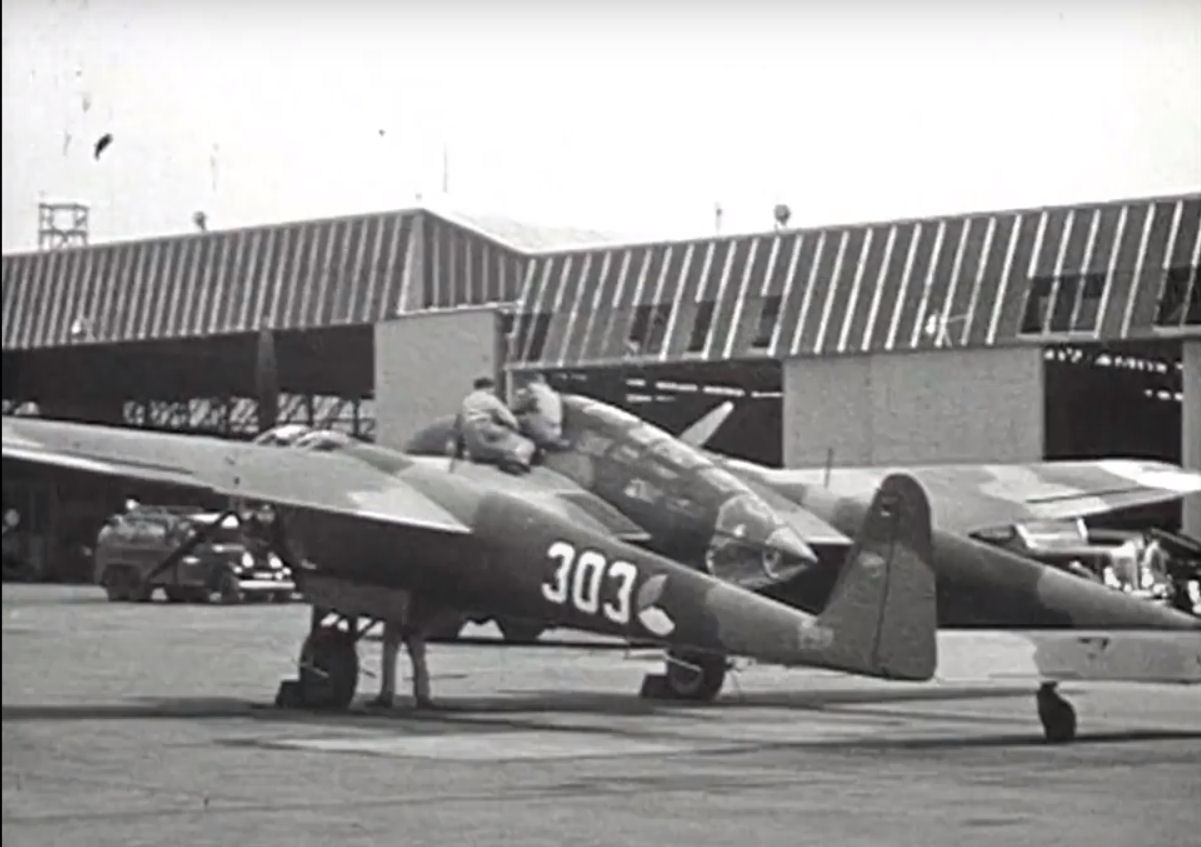Fokker G.1
The Fokker G.I was a Dutch twin-engined heavy fighter aircraft comparable in size and role to the German Messerschmitt Bf 110. Although in production prior to World War II, its combat introduction came at a time the Netherlands were overrun by the Germans. The few G.Is that were mustered into service were able to score several victories. Some were captured intact after the Germans had occupied the Netherlands. The remainder of the production run was taken over by the Luftwaffe for use as trainers.
During testing, the company received a contract from the Spanish Republican government for 26 G.1 “export” versions with Pratt & Whitney engines. Despite receiving payment, the order was destined never to be fulfilled as the Dutch government placed an embargo on the sale of military equipment to Spain. Fokker however continued building the aircraft and a story was released to the press that they were intended for Finland.
Besides the Dutch Luchtvaartafdeeling, several foreign air forces showed an interest in the G.I. as either a fighter or dive-bomber. In order to test its potential as a dive-bomber, the G.1 prototype was fitted with hydraulically operated dive brakes under the wings. Flight tests revealed that the G.1 was capable of diving at over 644 km/h (400 mph) and demonstrated aerobatic capabilities. Swedish Air Force officer Captain Björn Bjuggren tested the G.1 in over 20 dives and reported favourably on its effectiveness as a dive bomber. Orders for G.1 Wasp aircraft came from Spain (26 ordered) and Sweden (18), while the Mercury variant was ordered by Denmark (12) together with a production license that never came to be used, and Sweden (72). Although Belgium, Finland, Turkey, Hungary and Switzerland air forces showed great interest, they never placed firm orders.
The Luchtvaartafdeeling ordered 36 G.I’s with 541 kW (825 hp) Bristol Mercury VIII engines, the standard engine used by the Dutch Air Force in the Fokker D.XXI fighter, in order to equip two squadrons. Only the first four examples were built as three-seaters intended for ground-attack, with the remainder being completed as two-seat fighters. During the lead-up to hostilities, a total of 26 G.I’s were operational in the 3rd Jachtvliegtuigafdeling (JaVA) at Rotterdam (Waalhaven Airfield), and 4th JaVA Fighter Group at Bergen near Alkmaar. The aircraft were actively involved in border patrols and in order to ensure neutrality, on 20 March 1940, a G.1 from 4th JaVA forced down an Armstrong Whitworth Whitley from the RAF’s 77 sqn when it strayed into Dutch air space.
On 10 May 1940, when Nazi Germany invaded the Netherlands, 23 G.1 aircraft were serviceable while production of Spain’s order of the G.1 Wasp variant continued with a dozen aircraft completed, awaiting armament.
The German invasion started with an early morning (03:50 hours) Luftwaffe attack on the Dutch airfields. While the 4th JaVA received a devastating blow, losing all but one of its aircraft, eight 3rd JaVA G.1 fighters of the Waalhaven airbase in Rotterdam, that were already fully fuelled and armed, scrambled in time and successfully engaged several German aircraft. The surviving aircraft continued to fly, but with mounting losses, bringing their numbers down to three airworthy aircraft by the end of the first day. Despite the heavy losses of 4th JaVA, some of the planes could be kept in the air by scavenging parts from various planes. In the “Five-day War”, the available G.1 fighters were mainly deployed in ground attack missions, strafing advancing German infantry units, but also used to attack Junkers Ju 52/3m transports. Although reports are fragmentary and inaccurate as to the results, G.1 fighters were employed over Rotterdam and the Hague, contributing to the loss of 167 Ju 52s, scoring up to 14 confirmed aerial kills.
At the conclusion of hostilities, several G.Is were captured by the Germans, with the remainder of the Spanish order completed at the Fokker plant by mid-1941 in order for the G.1s to be assigned as fighter trainers for Bf 110 crews at Wiener Neustadt. For the next two years, Flugzeugführerschule (B) 8 flew the G.1 Wasp until attrition grounded the fleet.
On 5 May 1941, a Fokker test pilot, Hidde Leegstra, accompanied by engineer (and member of the Fokker Board of Directors) Ir. Piet Vos, managed to fly a G.1 to England. The crew’s subterfuge involved acquiring additional fuel for the supposed test flight as well as ducking into clouds to deter the trailing Luftwaffe aircraft from following. After landing in England, the G.1 was conscripted by Phillips and Powis Aircraft, later Miles Aircraft. The company had designed an all-wooden fighter-bomber, and was interested in the G.1 wing structure and its resistance to the rigours of a British climate. Despite being left outdoors for the remainder of the war, the G.1 survived only to be eventually scrapped after 1945.
Photographs of the Fokker G.1
- Fokker G.1 Prototype
- Under Construction
- Photographs of the Fokkers G.1
- Detailed Photographs
- Fokker G.1 Reconnaissance Prototype
- Crashed Fokker G.1s
- German Operated Fokker G.1 Fighter Trainers
Fokker G.1 Prototype





Under Construction

Photographs of the Fokkers G.1


















Detailed Photographs






Fokker G.1 Reconnaissance Prototype

Crashed Fokker G.1s

German Operated Fokker G.1 Fighter Trainers







